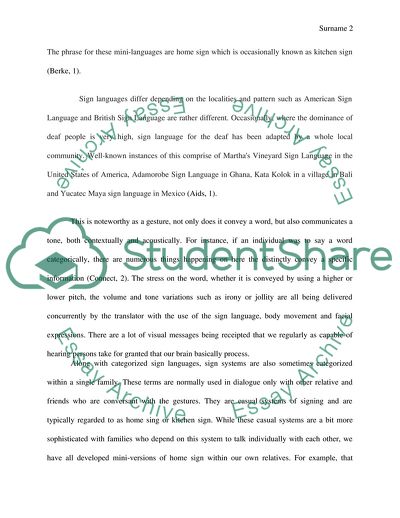Cite this document
(Sign Language Communication Article Example | Topics and Well Written Essays - 2500 words, n.d.)
Sign Language Communication Article Example | Topics and Well Written Essays - 2500 words. https://studentshare.org/systems-science/1868373-visualization-of-sign-language
Sign Language Communication Article Example | Topics and Well Written Essays - 2500 words. https://studentshare.org/systems-science/1868373-visualization-of-sign-language
(Sign Language Communication Article Example | Topics and Well Written Essays - 2500 Words)
Sign Language Communication Article Example | Topics and Well Written Essays - 2500 Words. https://studentshare.org/systems-science/1868373-visualization-of-sign-language.
Sign Language Communication Article Example | Topics and Well Written Essays - 2500 Words. https://studentshare.org/systems-science/1868373-visualization-of-sign-language.
“Sign Language Communication Article Example | Topics and Well Written Essays - 2500 Words”. https://studentshare.org/systems-science/1868373-visualization-of-sign-language.


